Celia visited Oxford sometime around 1694, and describes her visits to several colleges and the Botanic Garden. The last time I was in Oxford was in 2005, the day of the Underground bombings. My memories of the day being understandably filled with that dreadful event, I was excited to go back and see it again with fresh eyes and with Celia as my companion. I was also very fortunate to be given a tour of the Botanic Garden by the Gardens' Curator, Tom Price.
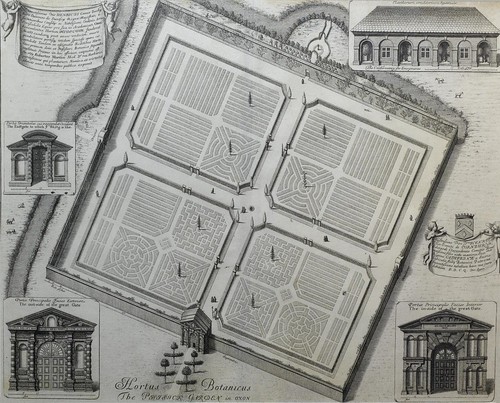 |
| The Garden as it appeared in Logan's print of 1675 (sciencemusem.org.uk), much the way Celia would have seen it. |
"The Physick garden afforded great diversion and pleasure, the variety of flowers and plants would have entertained one a week. The few remarkable things I tooke notice off was ye Aloes plant wch is like a great flag in shape, leaves and Coullour, and grows in the fform of an open Hartichoake and towards the bottom of each Leafe its very broad and thicke, In wch there are hollows or receptacles for ye Aloes. There is also ye sensible plant, take but a Leafe between finger and thumb and squeeze it and it immediately Curles up together as if pained and after some tyme opens abroad again, it looks in Coullour like a filbert Leafe but much narrower and long. There is also the humble plant that grows on a long slender Stalke and do but strike it, it falls flatt on ye ground stalke and all, and after some tyme revives againe and Stands up, but these are nice plants and are kept mostly under Glass's, ye aire being too rough for them. There is ye wormwood sage Called Mountaigne sage, its to all appearance like Comon sage only of yellower green, a narrow long Leafe full of ribbs; In yor Mouth the flavour is strong of Wormwood to the taste."
Founded as a Physic garden under Magdalen College in 1621, Oxford Botanic Garden is the oldest botanic garden in Great Britain. It was made possible by a grant of £5,000 from Henry Danvers, first Earl of Danby. In today's money that would be somewhere in the neighbourhood of £3.5 million, all of which was spent building the arches and walls, with those being finished in 1633.
Plants flourished here for a few reasons: the land was part of the flood plain of the river Cherwell which flows along the eastern boundary of the garden so there was probably a layer of nutrient rich sediment from the floods. Floods being counter-productive to growing plants that prefer not to have constantly wet feet, the ground level was raised using "4,000 loads of mucke and dunge" from the College cesspits. Instant fertilizer. Waste not, want not, eh?
Having exhausted the garden's budget on stonework, there was no money left to pay the first superintendent, Jocob Bobart, who for seven years 'made ends meet' by selling fruit grown in the gardens. It must not have been a terrible stretch, as the man was a wealthy tea merchant. In that time the garden went from zero plants to 1,600.
I managed to track down all but one of the plants Celia mentions - the 'humble plant' remains elusive. Both Tom and I were stumped as to what it could be, even with Celia's description. My friend Google gives the Mimosa as 'humble plant', which Celia calls the 'sensible plant', a name by which the Mimosa is still known today. Another plant that she would have seen, though didn't describe, is this enormous yew, planted as a topiary in 1645. You can see the pairs of topiary punctuating the north-south axis in the 1675 plan. This is the only one of those original plantings left. New yews have been planted near the entrance which give an idea what they would have looked like when Celia visited.
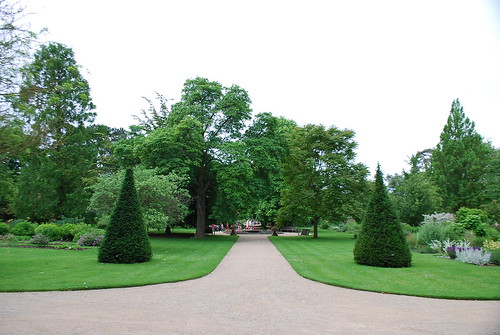 |
| Back in Celia's day, the Civil War yew probably looked like these. |
During my blissful walk around the gardens I also spied a few plants that I found both familiar and diverting.
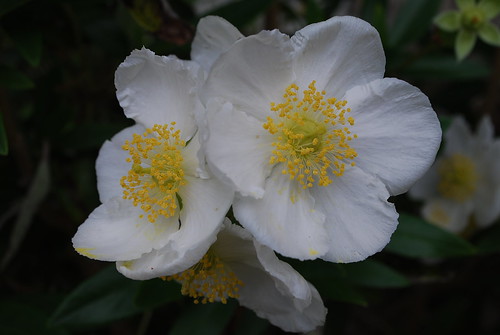 |
| A fellow CA native: Carpenteria californica. It smelled mildly of sun and cinnamon. |
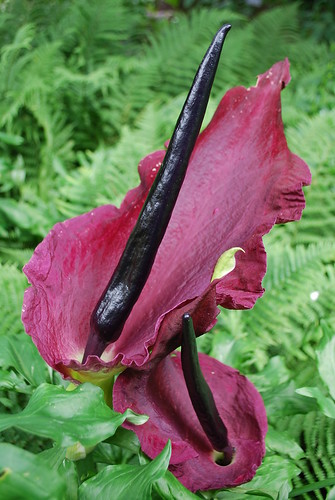 |
| Dramatic Dranunculus vulgaris, a relative of the behemoth Amorphaphalus titanum. Both smell of rotting flesh. The Dranunculs was being pollinated by several flies no doubt expecting a carrion feast. |
My favorite on Celia's list is the sensitive plant, Mimosa pudica. When touched, the leaves do indeed "Curles up together as if pained." What I found interesting is only the leaflets that are actually touched close but when I ran my finger along the stem underneath, the entire leaf closed up. An aquatic plant with similarly bashful behavior is the Neptunia aquatica (good name for a water plant, no?), which I always stopped to pet when I passed it in the pond gardens at Longwood. Tom and I diverted ourselves for a few minutes torturing the Mimosa, and I imagine Celia must have done the same but she didn't have the technological marvel that is the modern day pocket camera to share it with her friends.
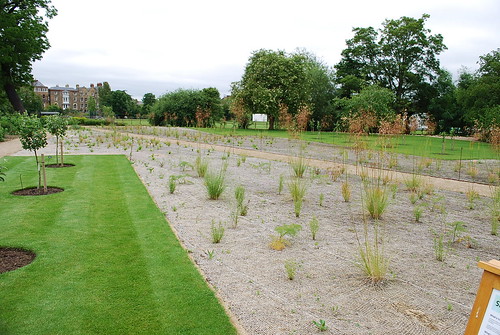 |
| Sown last autumn and helped by the recent rains, things are now beginning to germinate quite rapidly |
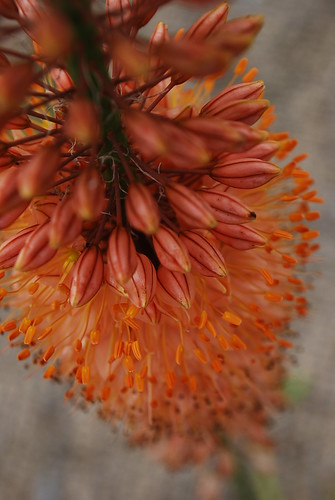 |
| Foxy Eucomis |
Celia also wouldn't have seen the glasshouses, which only appeared in 1766. The 'Glass's' that Celia refers to could have been an early type of Wardian Case, cold frame, or bell jars, since greenhouses in general weren't considered a necessary addition to the garden until the early eighteenth-century when William and Mary brought the fad of orangeries over from Europe.
The gardens are less than five acres with only a handful of gardeners to care for it, but it's a gem in the botanical world, not least for its history and longevity. And as a botanic garden ought to do, it's continuing the legacy of plant exploration, exploitation for medicinal and chemical use, and experimentation on new methods of cultivating plants, leading me to agree with Celia that the diversity of plant species really could keep a plant geek occupied for some time. Unfortunately I had a schedule to keep and didn't have as much time as I would have liked to see the many splendors of the garden. Guess I'll have to make a return journey!
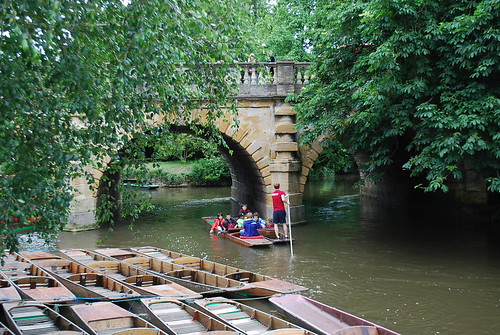 |
| When in doubt, punt. |
The Oxford Botanic Garden is located on the High Street directly opposite the entrance to Magdalen College. Opening times, admission prices, and events can be found on their website. If, like me, you're taking public transport from London, Megabus and Oxford Tube busses stop at St. Clements, which is a 5 minute walk from the gardens.
A word of Caution to Megabus customers: The main pick up point in London for the Oxford-bound bus IS NOT at Victoria Coach Station! The stop is across the road, on Buckingham Palace Road directly opposite the library at stop 10. If you miss your bus, as I did because of the dodginess of the directions on their website (one of the entrances to the coach station fronts Buckingham Palace Road. Duh.), you will be required to buy a new ticket which costs one and a half times more than the original return ticket you booked on line. Beware! Be very 'ware!

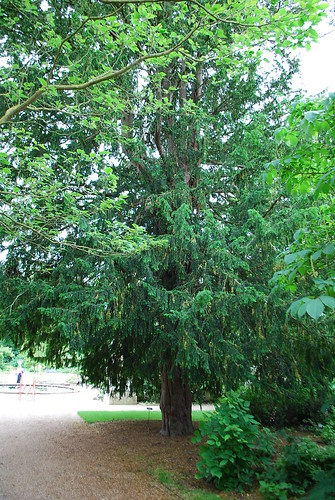

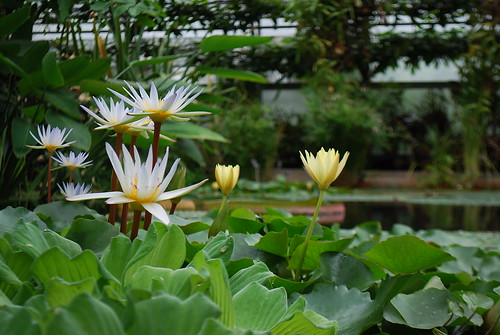




No comments:
Post a Comment